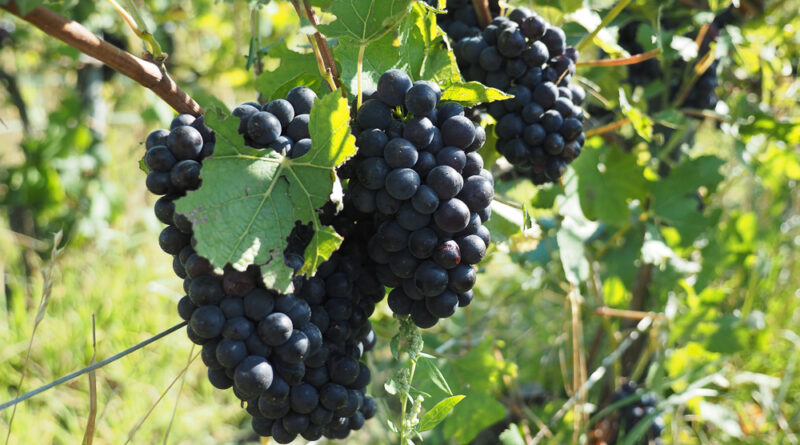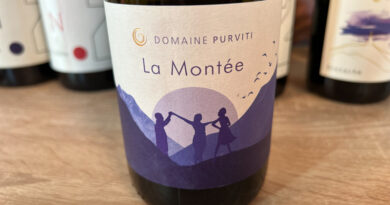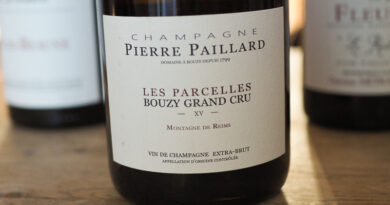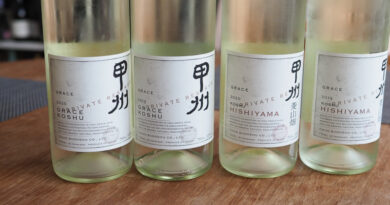Visiting Champagne Mumm (2): new approaches to viticulture
Mumm is one of the two Champagne houses owned by Pernod Ricard, along with Perrier-Jouët. I visited them during harvest in September 2021: I wanted to learn more about the experimental viticultural work that they’ve been undertaking, as well as seeing the Champagne harvest in action. It was also a good chance to taste through the range with Chef de Caves Laurent Fresnet.
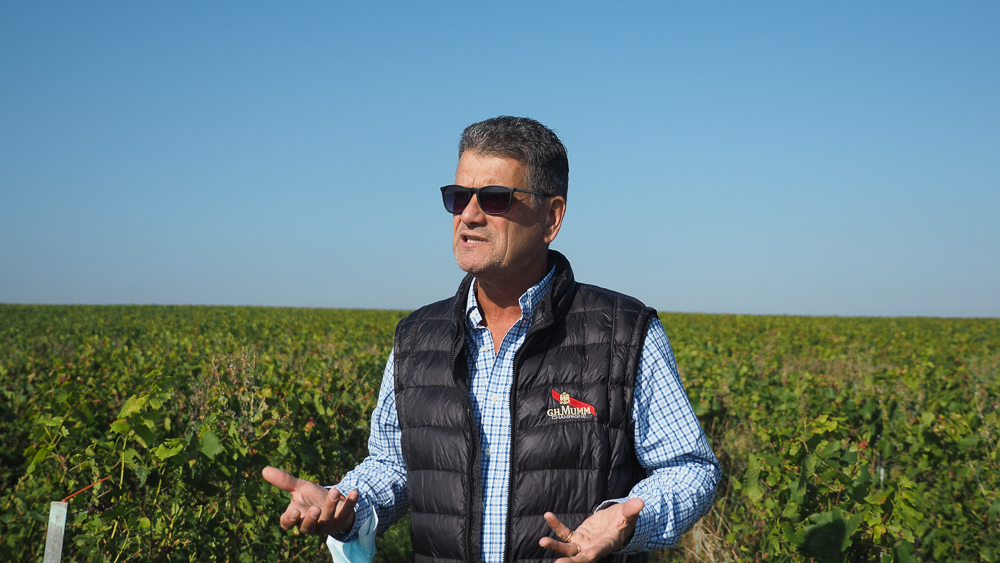
Our vineyard tour was with Bernard Pineau, head of sustainable winegrowing at Martell Mumm Perrier-Jouët (MMPJ). Champagne often gets a bad rap for its viticulture, but it’s something the region has worked hard on of late. There’s a sustainability certification, VDC (which stands for Viticulture Durable Champagne https://www.champagne.fr/en/sustainable-development/certification ) and Mumm have belonged to this since 2016 for their 215 hectares of owned vineyards. They eliminated herbicides in 2020. They are now trialling regenerative viticulture in two plots in Mailly and Verzenay, with 3 hectares this year, and another 6 hectares planned for 2022.
They also have 6 hectares under organic management. ‘It’s not our plan to go to organic certification,’ says Pineau, ‘but we’re looking to see what we can learn from it. The model we want to build is to focus on the quality of the soil, and organics is not the best way to look after the soil. Our idea is to decrease the level of copper sprayed on the vines to protect the soil.’
Pineau says that the vines get their nutrients from the soil, which is why they need to focus on it. ‘The model of regenerative viticulture is a holistic approach,’ he says. ‘It is about the whole ecosystem. The ecosystem, biodiversity – it is a global approach to viticulture.’
So, according to Pineau, what is regenerative agriculture? ‘The ground is at the core of the philosophy,’ he says. ‘The ground is the motor, and you need to feed this motor with energy. We are always looking for our soils to be covered by plants, and these will give fuel to the soil. The grass here is natural, but the plant covers we used were sown. At first we will examine the chemistry of the soil, then its physical characteristics, and then its life, looking at the biodiversity of bacteria, fungi and animal life. We will see whether the soil is compacted or aerated. We will look at the microbes that are living in the soil.’
Another key aspect is the soil structure. ‘Compaction is bad, because the soil life needs water and air. The plants that are sown need to be adapted to aerate the ground and allow the water to infiltrate.’
They look at the nutrient needs of the soil. If it is for nitrogen, for example, they sow nitrogen-fixing plants. He says that they need 4-5 years to transform conventionally farmed plots to regenerative methods.

One of the challenges is potential competition between the vines and the cover crops, so they adapt the cover crop mix to avoid this. ‘The main goal is not to use fertilizers,’ he says. ‘We want a natural nutritive cycle to be in use thanks to the plant cover.’
In the past, all the soils here were bare, because of herbicide use. This is bad for both erosion and drainage. It also encourages compaction of the soil, as does too much cultivation. ‘If you keep cultivating the soil, it will be more compact, with long-term effects on fertility.’
‘A soil which is working well will have a positive consequence for the vine, because the vine will be healthier,’ says Pineau. ‘It can protect the vine against diseases. The natural protection of the vines works better thanks to better soil.’

One of the challenges is the increasing number of hot years because of climate change. ‘In the vineyard now we are trying to anticipate the impact of global warming over the next 10 years,’ says Pineau. This is the second goal, after eliminating fertilizers. The third is to capture carbon from the air.
They sow cover crops just after harvest. These grow, and by the following May they are high, at around 1 m 50. This plant cover is one way to keep carbon in the soil. In May they roll the cover, which then acts as a mulch and begins to break down. There’s a difference of 2-3 C in the summer between naked and covered ground, so this reduces evaporation, and with it vine water stress.
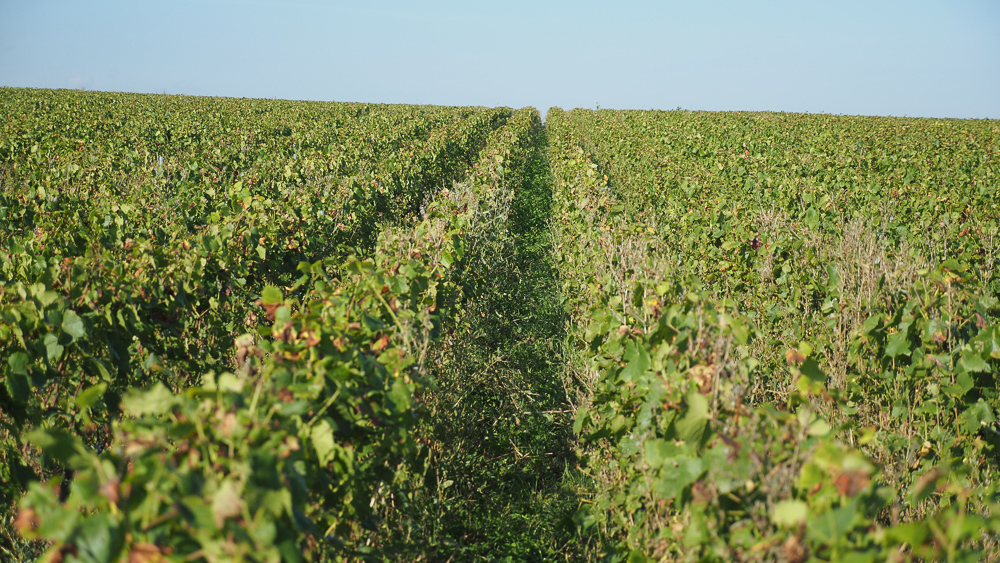
One potential threat is that there is a higher spring frost risk when the ground isn’t bare. But with the cover crop growing this high, it protects the canes and their fragile buds.
Managing the undervine growth is one of the big challenges with this system. ‘It’s the most difficult issue we face today,’ says Pineau. ‘If it’s too high we have to cut it with tractors. One idea is to use an electric autonomous robot. We have one already, called Bacchus/Vitibot.’ He says that they are also looking at cover crops that don’t grow into the canopy, and which are not competitive with the vine. ‘We are at the beginning of these trials. The main issue in Champagne is the high density.’
On this topic, we went to look at some more experimental plots, this time of VSL (Vignes Semi-Larges). This is one of two rule changes in the region that came into force in July 2021.

From 2023 vineyards with lower planting densities will be permitted. Currently vineyards average 8000 plants per hectare (row width maximum of 1.5 m, and canopy height typically 1.2 m), but the density will change to around 5000 plants/hectare with a maximum row spacing of 2.2 m. The canopy height will be around 2 m, which is easier to work and is less prone to frost damage because the fruiting wire is higher. More efficient tractors will be possible with the VSL system, which has been trialled for a decade. Cynics think big companies want this vineyard restructuring in order to introduce mechanization, including machine harvesting.
At the same time, a new resistant variety, Voltis, was allowed. This is on a 10 year trial basis and it can’t be more than 10% of the blend. [See this link for more.] It’s one of the varieties developed by the ResDur program and it has stacked resistance genes to both powdery and downy mildew. It also has a later budburst than Chardonnay (less frost risk), and is harvested slightly later with better acidity (an insurance against climate change). Some spraying is recommended in order to maintain the resistance, but reductions of around 90% in sprays are possible with this variety.
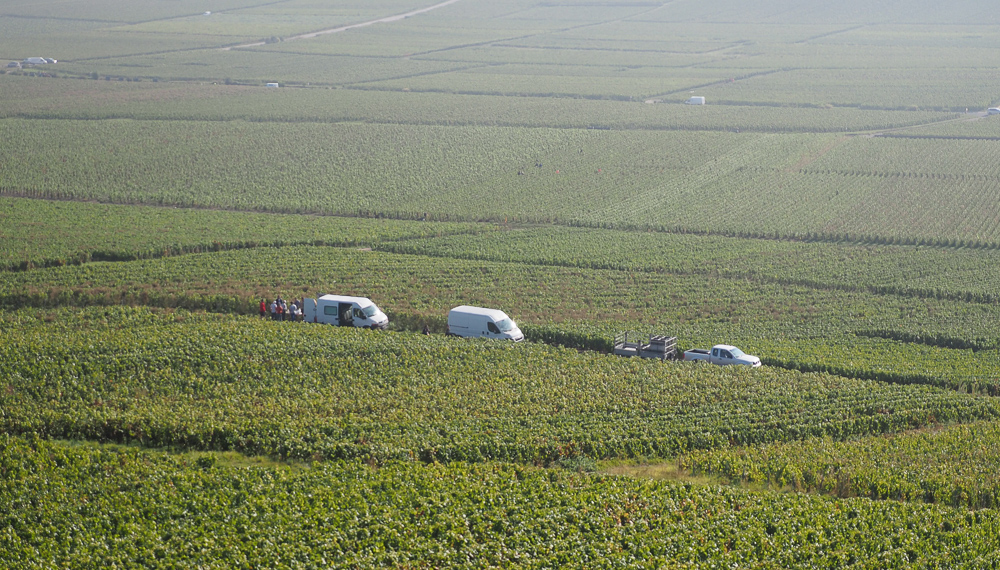
One other thing Mumm are beginning to trial is agroforestry. This is the pairing of trees with vineyards. ‘It’s planting trees in the vineyard to mix forests and agriculture together, to create a microclimate to allow the natural symbiosis between the trees and the vines themselves,’ says Pineau. ‘The main issue is to find the right type of tree. In southwest France more and more trees are planted, and they provide shade in the vineyards and protect the ground and the vines.’ They are now looking for the right sort of trees for Champagne vineyards, experimenting on small plots. ‘We will need 15 years to see the results.’

